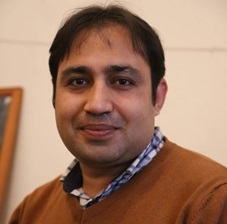
Dr JAWAD Ahmad
School of Computing, Engineering and Built Environment, Edinburgh Napier University, UK
Dr Jawad Ahmad (SMIEEE) is a highly experienced teacher with a decade of teaching and research experience in prestigious institutes. He has taught at renowned institutions such as Edinburgh Napier University (UK), Glasgow Caledonian University (UK), Hongik University (South Korea), and HITEC University Taxila (Pakistan). He has published in renowned journals including IEEE Transactions, ACM Transactions, Elsevier and Springer with over 180 research papers and 5000 citations. For the past three years, his name has appeared on the list of the world’s top 2% scientists in Computer Science, as published by Clarivate (a list endorsed by Stanford University, USA). Furthermore, in 2020, he received the endorsement of UK Exceptional Talent Candidate (‘Emerging Leader’) for pioneering work in the field of Cybersecurity and AI. To date, he has secured research and funding grants of over £250K in the UK and Norway as a Principal Investigator (PI) and a Co-Investigator (Co-I). In terms of academic achievements, he has earned a Gold medal for his outstanding performance in MS (Electrical Engineering) and a Bronze medal for his achievements in BS (Electronics Engineering).
With the advent of digital communication, the security of digital images during transmission and storage has become a major concern. Traditional Substitution Box (S-Box) replacement algorithms frequently fail to successfully conceal information inside highly auto-correlated parts of an image. The security challenges raised by three popular S-box substitution methods—single S-box, multiple S-boxes, and multiple rounds with multiple S-boxes—particularly when dealing with images with highly auto-correlated pixels and lower grey scales will be addressed in this talk. A novel technique known as SRSS (Single Round Single S-Box encryption scheme) will be discussed in this talk. To effectively encrypt the plaintext image, SRSS uses a single S-box for substitution in just one round. Furthermore, this work introduces a new method CROSS (Chaos-based Random Operation Selection System), which eliminates the need for several S-boxes, lowering the complexity of the encryption system.